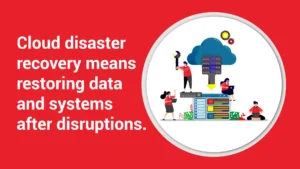In 2019, only 5 million people worked from home full-time in the United States, which is roughly 3.4% of the overall US workforce, as reported by Fundera.com. Even worldwide, only 1 in 5 full-time workers work from home frequently, with only 10% of those doing so full-time. This is a raise of 173%, excluding the self-employed population, since 2005 according to the same website.
In March 2020, within the United States, about 15% of the total workforce were working remotely 1-2 times a week, with 70% of those wishing to convert to full-time from home if given the chance. Then the pandemic hit, and suddenly everyone is suddenly forced to work from home.
Since then, we have heard a lot of discussion on whether the Work-from-home situation is going to become the new commonplace. The news has told us that Twitter, Square, Slack, and other companies have decided that their employees will work remotely going forward. We have seen even small businesses questioning if this is the future for them.
Moving to A Remote Workforce
When I was younger, I remember coming to Indianapolis with my father and being impressed by the large buildings with the company names on the side. Companies have been building bigger buildings for centuries. Even companies that share buildings strive to move higher in the floors, there is more prestige in being at the top, after all. Partners and managers set goals to be in the corner office on the highest floors. So, are companies just going to leave their buildings behind and have their people work from home?
According to the article “Are Remote Workers More Productive?”, an employee working from home is 13.5% more productive. Another source “Work From Home” by 12-mins.com, reported that in the office, there are at least 70-minutes per day of interruptions and ‘water cooler’ conversations. They also reported that employees are more likely to stay with a company longer. My grandfather retired with 30+ years with the same company, but today, the average professional stays with a single company a range of 3.8 – 6.2 years within the public section. It is slightly higher for government work, but even in federal jobs, it only goes up to barely 8 years. When you add that it takes the average employee 18 months to 2 years to be fully productive, that means a company gets roughly 2 to 4 years of true production before the employee is moving on.
Employees who work from home report that they are happier and feel more satisfied with their work. They take less sick time and time off work because they feel they have a better home and work balance. These factors lead to employees staying with a company longer. Workers in larger metropolitan areas, such as NYC and LA, report up to 4.5 hours per day just commuting to an office. Many employees are even starting to negotiate reimbursement for travel and commute time within their employment contracts. At first, I thought big deal…$50 a month maybe, until I did some research. A 35 minute bus commute from the Virginia suburbs to a Washington DC Metro station can be a $170 expense per month, or over $2,000 a year, and that doesn’t include riding the Metro rail system to the final stop, or parking!
So, it would be smarter and more cost-effective for companies to move to a remote workforce. It even opens the opportunity to hire from anywhere in the world, not just local to the company’s office or candidates who are willing to relocate for the position. This is a wonderful prospect for potential employees who struggle with a disability that denies them the chance to commute to work.
Going into the technology side of the equation, Microsoft and other vendors have been putting products in place for a while that help facilitate a remote workforce. Products like Office 365 and Sharepoint make it very easy and secure to allow employees to work remotely. Tools such as Slack, Trello, and MS Teams allow for collaboration, while everyone’s favorite, Zoom, is great for video conferencing.
See You in the Office
It seems the argument is strong for remote workers staying at home and working from there. But what about the other side of this debate? According to Forbes magazine, many Fortune 500 companies have stated some interesting reasons, for why they will not be allowing their entire workforce to work remotely. In fact, IBM, Yahoo, and Aetna has revised their work-from-home policy within the last 5 years to reduce the workforce with that option. The main reason being Work-Life balance. They reflected that the division between work and personal time is being blurred during the shutdown, and employees are finding it more difficult to “turn off” the work. Instead of enjoying the lessened commute time, they are replacing them with more work hours. They realized that employees need face-to-face, real time interaction and stricter work balance to get real overall results.

“Water cooler” conversations, as stated before accounts for up to 70 minutes of interruption throughout a workday, but those casual conversations built strong bonds within your department and teams. Remote working means no grabbing lunch with co-workers, sharing laughs, or even tears at times. Friendships form and often last beyond the workday. We see company baseball teams, pick-up basketball games in the parking lot after work, or even supporting families during times of illness and crisis. The same Forbes magazine article mentions remote workers often feel lonely, disconnected, and prolonged remote work has led to more depression and other mental illnesses.
Recently, the owner here at Techno Advantage attended the funeral of an employee of a client. We had worked with him and he will be greatly missed. That’s part of the culture we have here. However, that’s not the case everywhere, as shared in “Work From Home”. The author relates an experience of a remote worker for 4 years for a large Corporation. She and her sibling lost both parents during an accident. Her brother worked a traditional office career and had several co-workers come by during the funeral and afterward to check-in and support him and his family during this difficult time. His family received flowers from the company, his department, and even some of his clients. The remote worker received an email from her direct supervisor, and some awkward condolence comments during her first staff meeting once she returned to work. Both siblings worked for similar size companies doing the same level of professional responsibility. The noticeable difference between the in-house vs remote worker left the remote working feeling unappreciated and disconnected.
These larger corporations support adding some flexibility to allow employees to work from home a couple days a week, will result in better overall employees, morale, and productivity. They believe that this current trend of people working from home full-time will be popular for a couple years, but then, reverse back to companies pulling people back into the office. One point they made to support this is, “look at the pop up of co-working spaces over the last two years – people want to work remotely but yet be near other people while they are doing so.”
Final Tips for Both Sides
In our research for this blog, we did find that both sides do have some overlapping advice for the company leaders regarding remote working.
- Have a written remote work policy. Whether you allow your employees to work remotely a couple days a week or full-time, develop a written policy regarding expectations, means of communication, and work hours. This policy might change as the environment changes, but it should exist in some way and be shared with all employees.
- Prioritize regular communication. Have a communication tool to allow for easy communication between staff, such as MS Teams or Slack and provide training. It’s not enough to simply give them the guide that comes with the tool. Everyone must know how to use these tools to fulfill the expectations set in the remote work policy.
- Schedule regular staff or team meetings. Ironically, it was suggested that Zoom or other video conferencing tools only be used for staff or team meetings, if necessary. Most communication can be done “off-camera” and the shutdown has led to too much “Zoom fatigue”.
- Use a centralized project management tool. Have all project specs, deadlines, and team member collaboration within a centralized tool, such as Trello, Workzone, or Hive.
- Give praise and say thank you often. Due to the separation, leaders recognize that employees working remotely need to hear ‘Thank you’ and receive kudos for well-done work more often. This is partly contributed to a lack of facial and body language received via email or written communication – “The employee doesn’t see the supervisor’s nod or smile at the end of a good productive day”, according to Forbes.com.
- Have a social time or outlet available. This can be a special channel within the communication tool for the water cooler conversation, for sharing jokes or to discuss the movie they saw recently. Others have suggested a “happy hours”, where employees are encouraged to meet online after hours for non-work-related conversation and a drink and snack, from their kitchen.
Here at Techno Advantage, we are curious to see where this goes. We are working hard to support clients whatever they decide. Whether your employees will work full-time in the office, work part-time in and part-time remotely, or work entirely remotely, we have the tools and security to make your company run smoothly.










